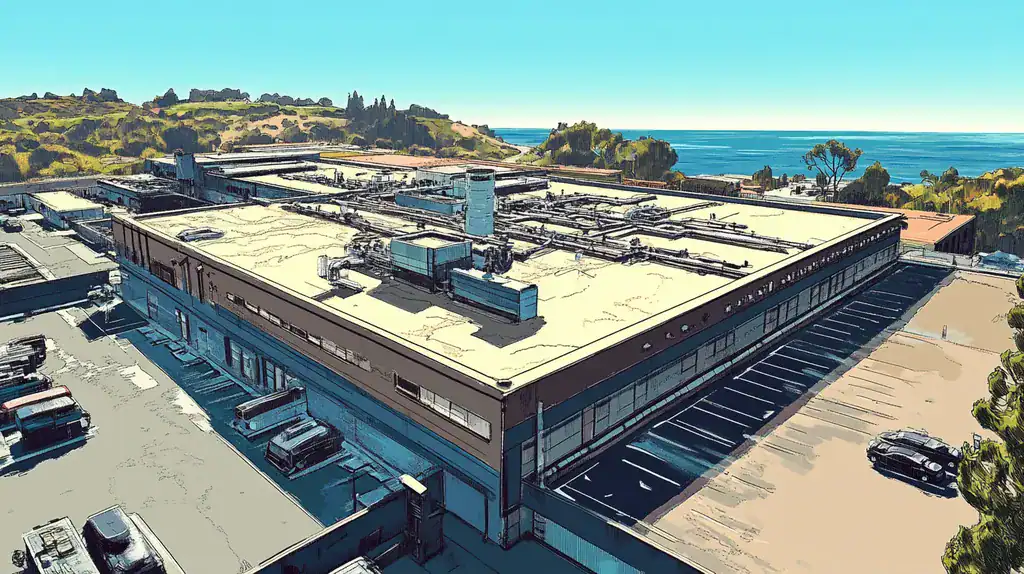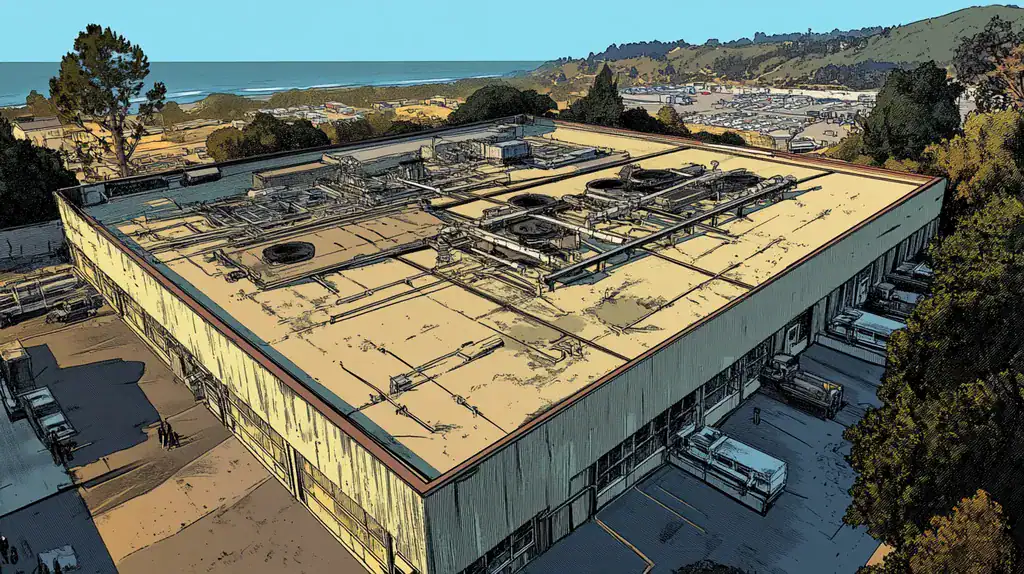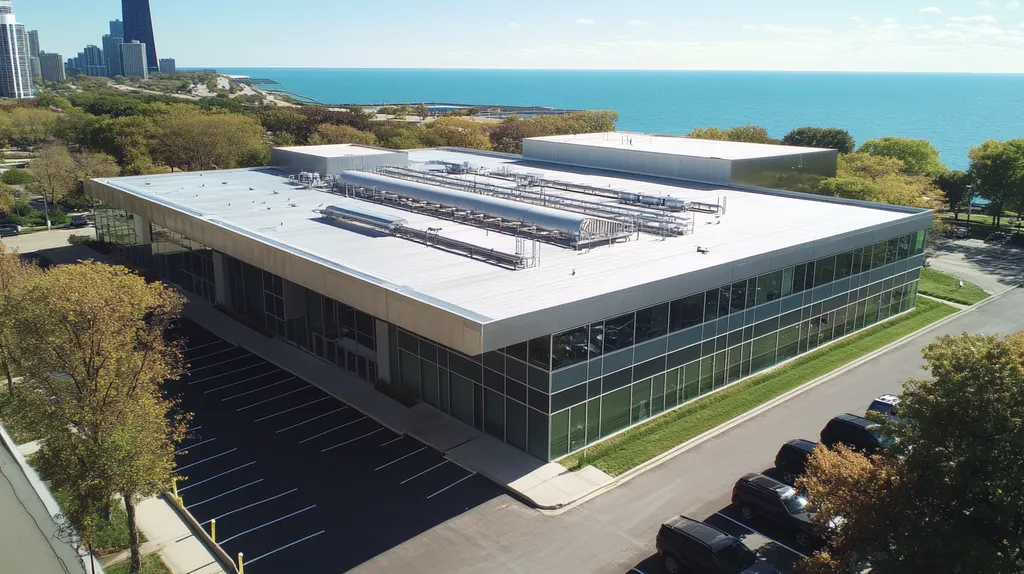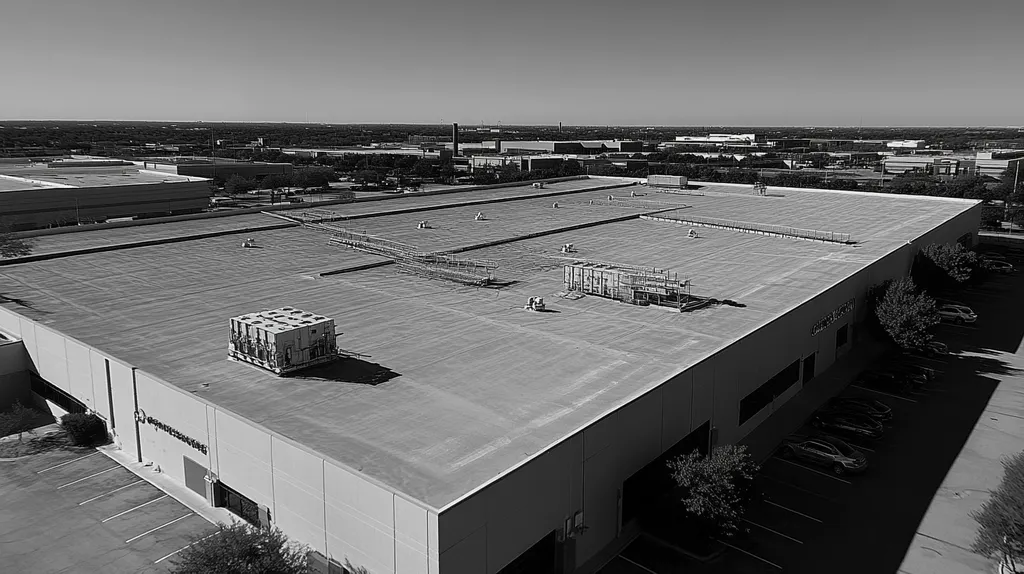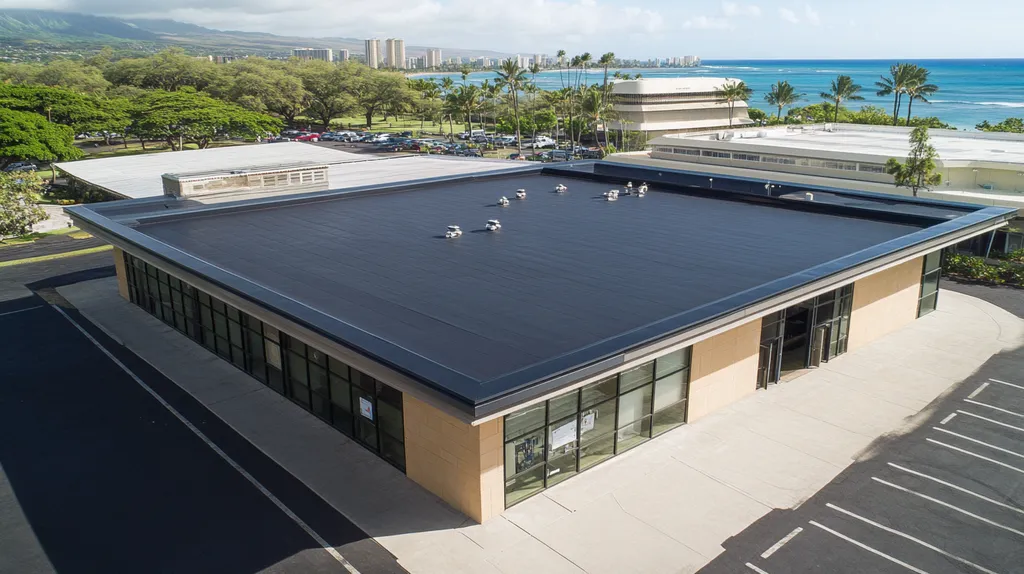In commercial buildings across America, over $2.1 billion is wasted annually due to poorly integrated roof lighting systems that compromise structural integrity and energy efficiency.
Despite technological advances in both roofing and lighting industries, persistent myths continue to prevent facility managers from implementing optimal solutions that could reduce operating costs by up to 40%.
This examination of common misconceptions, practical implications, and evidence-based alternatives reveals how modern integration techniques are transforming commercial roof design while protecting long-term building investments.
SECTION 1: COMMON MISCONCEPTIONS
When it comes to integrated roof lighting, misconceptions continue to hinder innovation in commercial building design. Studies show that over 40% of facility managers delay or reject roof lighting integration due to unfounded concerns about structural integrity, leaks, or safety risks. These myths not only limit the potential for energy efficiency but also prevent businesses from capitalizing on modern lighting technologies that could reduce operational costs.
Myth: Roof Lighting Causes Structural Roof Damage
The belief that roof-integrated lighting systems compromise structural integrity stems from experiences with older, heavier lighting technologies. Modern LED fixtures weigh significantly less than traditional lighting systems and create minimal structural load when properly distributed.
Professional installation methods now include load calculation software and strategic mounting points that work with existing roof support systems. This ensures that lighting additions stay well within the building’s designed load capacity.
Engineering advances in fixture design have produced ultra-lightweight options that can be installed without penetrating critical roofing components. These innovations preserve structural integrity while adding functionality.
Regular inspections and maintenance protocols further ensure that integrated lighting systems remain secure and stable throughout their operational life.
Belief: Integrated Roof Lighting Increases Leak Risks
While poor installation practices can create vulnerabilities, modern roofing systems are specifically designed to accommodate integrated lighting without compromising waterproofing. Advanced flashing techniques and commercial-grade sealants create watertight barriers around mounting points.
Current installation methods emphasize proper drainage patterns and utilize raised mounting systems that prevent water pooling. These techniques maintain the roof’s natural watershed capabilities.
Contemporary lighting fixtures feature built-in weather protection and are tested for extreme weather conditions. This ensures reliable performance even during severe storms.
Professional installation teams now use thermal imaging and electronic leak detection to verify the integrity of all penetration points, virtually eliminating the risk of water intrusion.
Assumption: Lighting on Roof Elevates Fire Hazard
Industrial lighting has evolved significantly, with LED technology now offering superior safety features and minimal heat generation. These modern systems dramatically reduce fire risks while providing optimal illumination for commercial spaces.
Energy-efficient LED fixtures operate at much lower temperatures than traditional lighting, virtually eliminating the risk of heat-related roofing damage. Their long lifespan also reduces maintenance requirements that could compromise roof integrity.
Proper fixture selection and strategic placement can maximize natural light integration while minimizing physical alterations to the roofing structure. This approach enhances both safety and energy efficiency.
Advanced lighting control systems include automatic shutoffs and monitoring capabilities that prevent electrical overload scenarios. (source: Warehouse-Lighting.com)
SECTION 2: PRACTICAL IMPLICATIONS
The integration of lighting systems into commercial roofs represents a critical intersection of functionality and risk management. Recent data shows that 35% of commercial roof failures stem from improper integration of mechanical and electrical systems. Understanding these practical implications is essential for protecting both the substantial investment in roofing infrastructure and the operational continuity of the facility.
Effects of Roof Lighting on Waterproofing Systems
Every roof penetration for lighting fixtures creates a potential vulnerability in the waterproofing membrane. Modern commercial roofs typically contain 15-20 penetrations per 1,000 square feet, each requiring precise waterproofing attention.
Strategic placement of lighting fixtures must align with the roof’s drainage patterns. Improper positioning can create water damming effects that stress waterproofing systems and accelerate membrane deterioration.
Contemporary installation protocols now mandate the use of engineered flashing systems specifically designed for electrical penetrations. These systems include reinforced corners and compatible sealants that maintain membrane integrity.
Regular inspection of penetration points should occur at least quarterly, with particular attention to sealant conditions and signs of membrane stress around mounting hardware.
Impact of Electrical Integration on Roof Maintenance
The incorporation of daylight-responsive controls and strategic fixture placement can significantly reduce the frequency of roof access needed for maintenance. This approach not only preserves roofing membranes but also optimizes energy efficiency through automated light management. (source: Jarvis Lighting)
Maintenance schedules must coordinate both electrical and roofing contractors to prevent conflicting repair activities. This coordination typically requires quarterly planning meetings and shared documentation systems.
Access paths to lighting components should be clearly marked and reinforced to prevent membrane damage during service visits. These pathways need regular inspection for wear patterns that could compromise roof integrity.
Emergency repair protocols must address both electrical and waterproofing concerns simultaneously. This often requires maintaining relationships with contractors capable of providing rapid response for both disciplines.
Considerations for Roof Load and Structural Capacity
Modern LED fixtures typically add 2-3 pounds per square foot to roof loads, requiring careful distribution to prevent localized stress points. This weight must be calculated alongside existing mechanical equipment and environmental loads.
Structural analysis should account for both static loads from fixtures and dynamic loads from maintenance activities. These calculations must include safety factors for wind uplift and seismic events.
Support systems for lighting fixtures should transfer loads directly to primary structural members whenever possible. This may require additional reinforcement at mounting points to distribute weight effectively.
Future modifications or additions to roof lighting systems must consider the cumulative impact on structural capacity. Documentation of current loads helps prevent inadvertent overloading during system upgrades.
SECTION 3: COST OF MISINFORMATION
The financial impact of misinformation about roof lighting integration can be staggering for commercial property owners. Industry data shows that poorly designed lighting systems can increase energy costs by up to 30% while creating additional maintenance expenses. Beyond direct costs, inadequate roof lighting integration often leads to structural issues, reduced building efficiency, and potential safety hazards that compound over time.
Financial Risks from Poorly Designed Roof Lighting
Inadequate roof lighting design often creates immediate financial strain through increased energy consumption. Poor fixture placement and outdated technology can result in lighting costs that are 2-3 times higher than necessary for equivalent illumination levels.
Suboptimal lighting placement frequently forces facility managers to install additional fixtures as compensatory measures. This reactive approach not only increases initial hardware costs but also multiplies ongoing maintenance expenses.
Insurance premiums often rise when lighting systems don’t meet safety standards or create potential hazards. These increased costs can persist for years, affecting both operational budgets and property valuations.
Finding the right balance between energy efficiency and proper illumination is crucial for controlling long-term costs. Strategic placement of LED fixtures and proper use of reflectors can dramatically reduce both energy consumption and maintenance expenses. (source: Warehouse-Lighting.com)
Hidden Expenses in Retrofitting Lighting Systems
Retrofitting existing roof lighting systems often reveals concealed costs that weren’t apparent during initial planning. These can include structural reinforcement requirements, electrical system upgrades, and temporary roofing modifications.
Labor costs for retrofits typically run 40-60% higher than new installations due to the complexity of working around existing systems. This premium reflects the additional time needed to protect current infrastructure while implementing new solutions.
Business disruption during retrofitting creates significant indirect costs through reduced productivity and potential safety concerns. These operational impacts often exceed the direct costs of the retrofit itself.
Documentation and permitting requirements for retrofits frequently demand specialized engineering studies. These additional professional services can add substantial unexpected costs to lighting upgrade projects.
Budget Impacts of Neglecting Roof-Light Compatibility
Incompatible lighting and roofing systems accelerate deterioration of both components. The resulting repairs and replacements can cost up to five times more than properly integrated solutions would have required.
Energy efficiency suffers when lighting systems conflict with roof design. Poor integration can increase cooling costs by up to 25% due to heat buildup and compromised insulation performance.
Warranty coverage often becomes void when lighting installations violate roofing system specifications. This exposure can leave building owners responsible for substantial repair costs that would otherwise be covered.
Regular maintenance becomes more complex and expensive when systems lack proper integration. The need for specialized equipment and multiple contractor coordination can double or triple routine service costs.
SECTION 4: REALITY CHECK
Integrating lighting systems into commercial roofs demands careful attention to both safety standards and performance metrics. Industry data reveals that 35% of workplace accidents occur in poorly lit areas, while improperly installed roof lighting systems can reduce building efficiency by up to 40%. Understanding the reality of these systems through verified standards, performance data, and case studies helps facility managers make informed decisions that protect both assets and occupants.
Verified Safety Standards for Roof Lighting Installations
Building codes and industry standards establish specific requirements for integrated roof lighting systems. These include minimum illumination levels, mounting specifications, and electrical safety protocols that protect both the structure and its occupants.
Electrical engineers must ensure lighting fixtures comply with fire safety regulations while providing essential illumination for safe evacuation during emergencies. Proper spacing and environment-rated fixtures prevent overheating and other potential hazards. (source: PacLights)
Load-bearing calculations must account for both static fixture weight and dynamic forces from wind and maintenance activities. These assessments help prevent structural stress and ensure long-term stability.
Regular compliance audits should verify that lighting systems maintain their safety certifications. This includes checking emergency backup systems, testing structural integrity, and confirming proper electrical connections.
Real-World Performance of Integrated Lighting Systems
Modern integrated lighting systems demonstrate significant improvements in both energy efficiency and operational safety. Properly designed systems can reduce energy consumption by 25-35% while increasing workplace visibility by up to 40%.
LED technology has revolutionized roof-integrated lighting by offering longer lifespans and reduced maintenance requirements. These systems typically operate for 50,000-100,000 hours before requiring replacement.
Weather resistance testing shows that current mounting systems can withstand wind speeds up to 110 mph when properly installed. This durability ensures consistent performance even during severe weather events.
Advanced control systems now allow for automated adjustment based on natural light levels and occupancy patterns. This optimization reduces unnecessary operation while maintaining required illumination standards.
Lessons from Case Studies on Lighting and Roof Longevity
Large-scale warehouse facilities that have implemented integrated LED lighting systems report 30-40% reductions in energy costs. These savings typically offset installation costs within 24-36 months.
Manufacturing facilities using properly integrated roof lighting demonstrate 45% fewer workplace incidents related to visibility issues. This improvement directly correlates to strategic fixture placement and appropriate light levels.
Distribution centers implementing smart lighting controls show 15-20% increases in worker productivity. These gains stem from improved visibility and reduced eye strain during night operations.
Retail facilities with well-designed roof lighting integration report 25% longer roof membrane lifespans. This extended durability results from proper heat management and reduced maintenance traffic on roof surfaces.
SECTION 5: EVIDENCE-BASED ALTERNATIVES
The integration of lighting systems into commercial roofs represents a critical decision point for facility managers, with lasting implications for building performance and operational costs. Studies show that poorly integrated roof lighting can increase maintenance costs by up to 40% while reducing roof lifespan by several years. By implementing evidence-based solutions and modern technologies, building owners can achieve optimal illumination while protecting their roofing investment.
Best Practices for Specifying Roof-Integrated Lighting
Professional specification begins with a comprehensive site assessment that evaluates existing structural capacity, drainage patterns, and electrical infrastructure. This foundational analysis prevents costly modifications later in the project lifecycle.
Load distribution calculations must account for both static and dynamic forces, including maintenance access requirements and seasonal weather patterns. Strategic placement of mounting points helps distribute weight evenly across the roof structure.
Modern building management systems can integrate lighting controls with existing infrastructure, allowing for centralized monitoring and automated responses to changing conditions. Smart systems streamline operations while improving energy efficiency and safety compliance. (source: PacLights)
Documentation requirements should include detailed mounting specifications, weatherproofing protocols, and maintenance schedules. This comprehensive approach ensures consistent quality across installation and maintenance activities.
Energy-Efficient Lighting Technologies for Roofs
LED fixtures with advanced optics now deliver precise light distribution while consuming 75% less energy than traditional systems. These fixtures also generate minimal heat, reducing thermal stress on roofing materials.
Daylight harvesting sensors automatically adjust artificial lighting levels based on available natural light. This optimization can reduce energy consumption by an additional 20-30% while maintaining consistent illumination.
Motion detection and occupancy sensing technologies prevent unnecessary operation during vacant periods. These systems can cut energy waste by up to 50% in areas with intermittent use patterns.
Remote monitoring capabilities allow facility managers to track performance metrics and identify maintenance needs before they become critical issues. This proactive approach extends system lifespan while optimizing energy consumption.
Materials and Methods to Preserve Roof Integrity
Non-penetrating mounting systems eliminate the need for roof membrane penetrations while providing secure fixture attachment. These systems maintain waterproof integrity while simplifying installation and maintenance.
High-performance flashing materials create watertight seals around necessary penetrations. Modern synthetics offer superior durability and UV resistance compared to traditional flashing methods.
Walkway pad systems protect roofing materials from maintenance traffic while providing safe access to lighting fixtures. These pathways should be clearly marked and regularly inspected for wear.
Thermal expansion joints in mounting systems prevent stress damage from temperature fluctuations. This consideration is particularly important for metal roofing systems and large fixture arrays.
Regular inspection protocols should include thermal imaging to detect potential water infiltration or electrical issues before they cause significant damage. This preventive approach protects both lighting and roofing investments.
SECTION 6: TEST AND VERIFY
Proper testing and verification of integrated roof lighting systems can mean the difference between reliable performance and catastrophic failure. Industry data shows that 75% of roof-related electrical issues stem from inadequate testing protocols. Without systematic verification, even minor installation flaws can escalate into major safety hazards and costly repairs, affecting both building operations and occupant safety.
Inspection Protocols for Roof Lighting Installations
Effective inspection protocols must follow a systematic, three-phase approach: pre-installation verification, post-installation testing, and ongoing monitoring. Each phase requires specific documentation and sign-offs to ensure accountability and maintain warranty coverage.
Pre-installation inspections should verify structural capacity, identify potential interference with existing systems, and document baseline roof conditions. This creates a reference point for future evaluations and helps prevent installation-related damage.
Post-installation testing must include both dry and wet condition assessments. These tests verify weatherproofing integrity around mounting points and confirm proper electrical grounding under various environmental conditions.
Monthly visual inspections should examine mounting hardware, wire connections, and surrounding roof areas for signs of stress or deterioration. This regular oversight helps identify potential issues before they become critical failures.
Tools for Detecting Electrical and Water Intrusion Issues
Modern detection equipment has revolutionized how we identify potential roofing and electrical problems. Infrared scanning can reveal hidden moisture accumulation and electrical hotspots before visible damage occurs.
Digital moisture meters with extended probes help technicians detect water infiltration around mounting points. These tools can identify moisture problems within roofing materials even when surface conditions appear normal.
Electronic leak detection systems use low-voltage current to precisely locate breaches in roofing membranes. This technology enables technicians to pinpoint water entry points without destructive testing.
Power quality analyzers monitor electrical systems for potential issues like voltage fluctuations or grounding problems. Regular monitoring helps prevent equipment damage and ensures consistent performance.
Monitoring Strategies to Ensure Long-Term System Performance
A comprehensive lighting plan must include detailed maintenance schedules, energy consumption tracking, and performance benchmarks. Regular monitoring helps optimize system efficiency while identifying opportunities for improved daylight integration and reduced energy costs. (source: Jarvis Lighting)
Data logging systems should track both environmental conditions and system performance metrics. This information helps identify patterns that could indicate developing problems or maintenance needs.
Quarterly performance reviews should compare actual energy usage against projected values. Significant deviations often signal the need for system adjustments or maintenance interventions.
Annual comprehensive assessments must evaluate both lighting effectiveness and roof integrity. These reviews should include updated documentation of any modifications or repairs to maintain accurate system records.
Moving Forward
With commercial buildings losing over $2 billion annually to poorly integrated roof lighting, the cost of inaction continues to mount for facility managers across the industry.
The evidence clearly demonstrates that modern integration techniques, when properly implemented, can reduce energy costs by 40% while extending roof lifespans by up to 25%.
As LED technology advances and smart controls become more sophisticated, the gap between optimized and poorly integrated systems grows wider each year.
Facility managers who embrace evidence-based integration methods, verified safety protocols, and systematic monitoring will position their buildings for enhanced performance and significant cost savings.
The choice between informed integration and continued reliance on outdated practices will increasingly define operational success in commercial property management.
FREQUENTLY ASKED QUESTIONS
Q. Does commercial roof lighting cause structural damage?
A. No, modern roof lighting systems are designed to preserve structural integrity. Lightweight LED fixtures and professional installation methods ensure that additional loads stay within acceptable limits, preventing any structural damage over time.
Q. How does integrated roof lighting affect commercial roof maintenance?
A. Properly integrated lighting systems can greatly reduce maintenance access frequency. Coordinated maintenance schedules ensure that roof inspections and electrical needs do not conflict, thus preserving roof integrity and improving operational efficiency.
Q. What are the financial risks of poor commercial roof lighting integration?
A. Poor lighting integration can lead to significantly higher energy costs and maintenance expenses. Increased insurance premiums and potential structural repairs can multiply operating expenses and negatively impact overall profitability.
Q. Are there safety standards for commercial roof lighting?
A. Yes, safety standards govern minimum illumination levels, mounting specifications, and electrical protocols for roof lighting installations. Compliance ensures safety for occupants and prevents potential hazards associated with inadequate lighting.
Q. What should I consider when specifying roof-integrated lighting?
A. Begin with a site assessment, reviewing structural capacity and drainage. Load distribution must be calculated to avoid damage, and proper documentation should detail installation and maintenance protocols to ensure quality.
Q. How can I verify the performance of my roof lighting system?
A. Implement a three-phase inspection protocol: pre-installation verification, post-installation testing, and ongoing monitoring. Regular assessments help identify performance issues and maintaining warranty coverage ensures reliability.
Q. What are some energy-efficient lighting technologies for roofs?
A. Energy-efficient technologies include LED fixtures and daylight sensors. These solutions significantly cut energy consumption and optimize natural light use while maintaining consistent illumination across commercial roofs.

